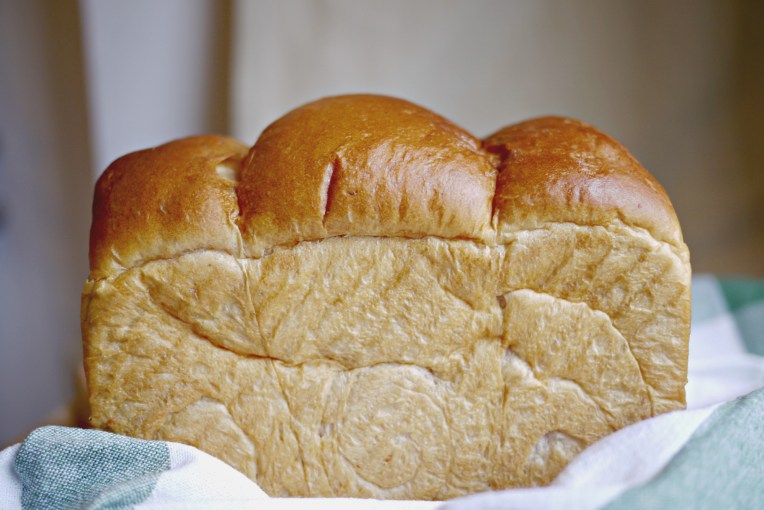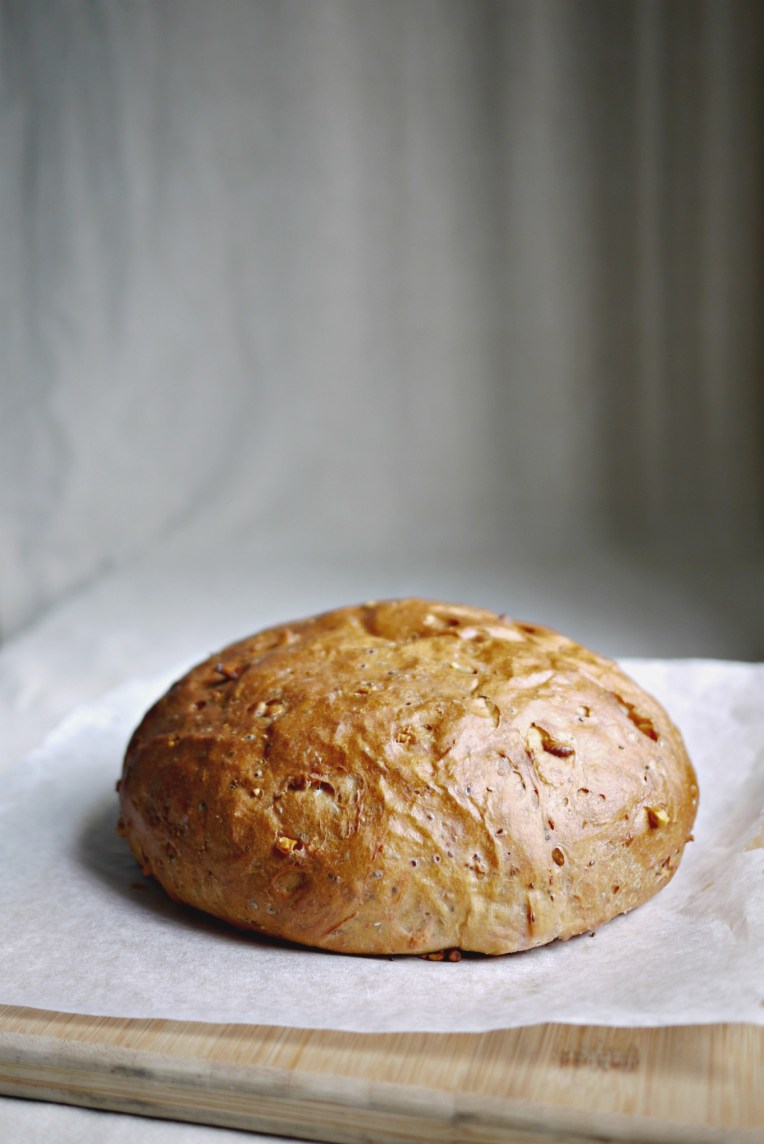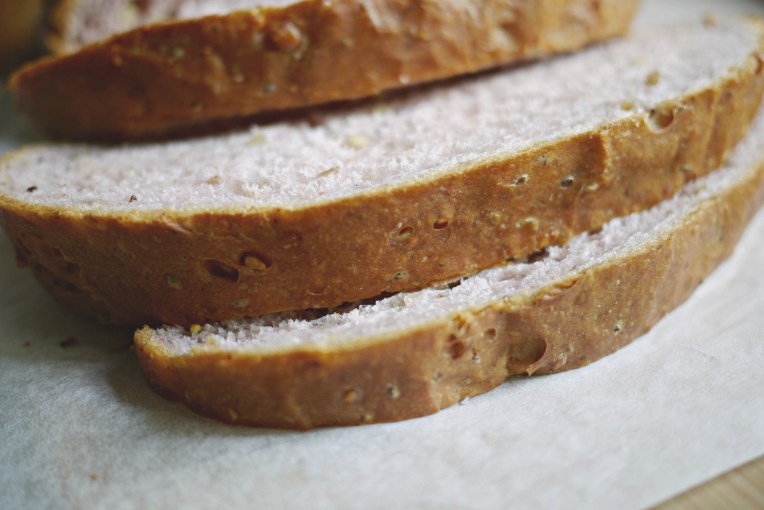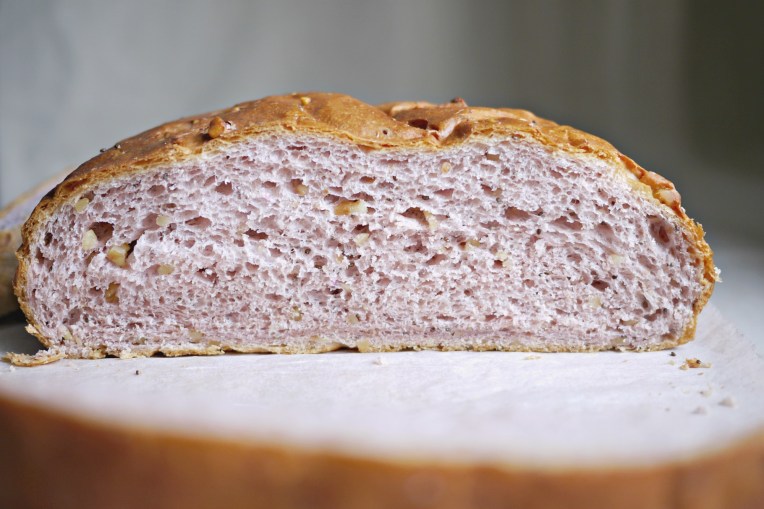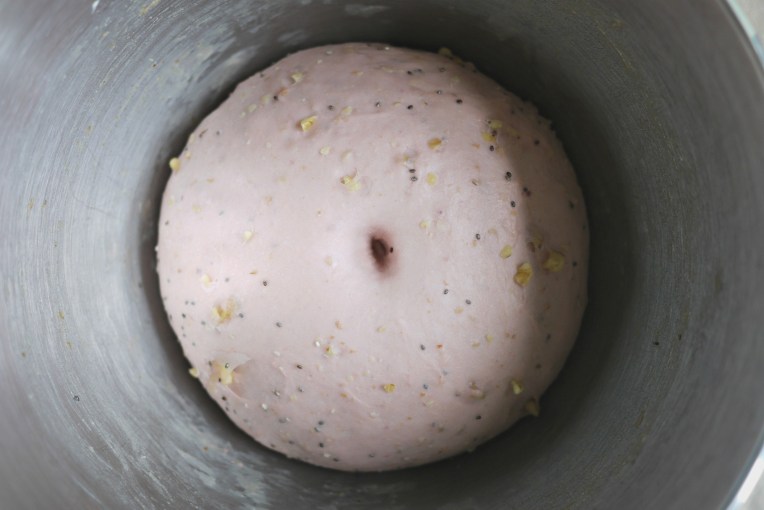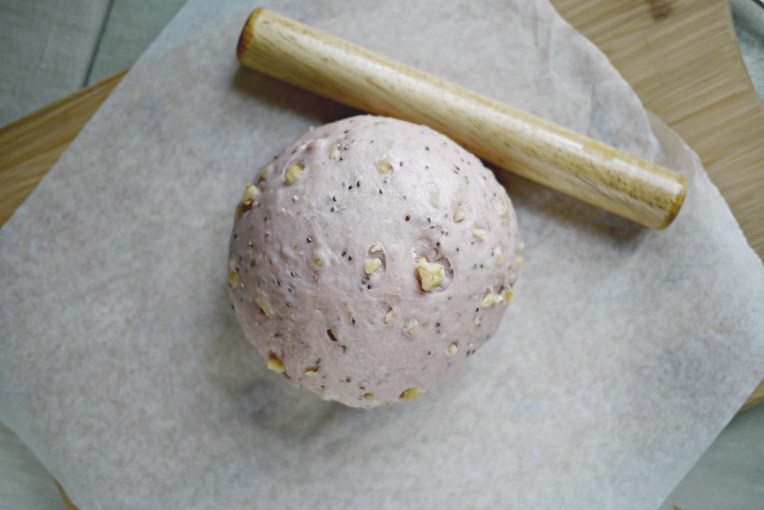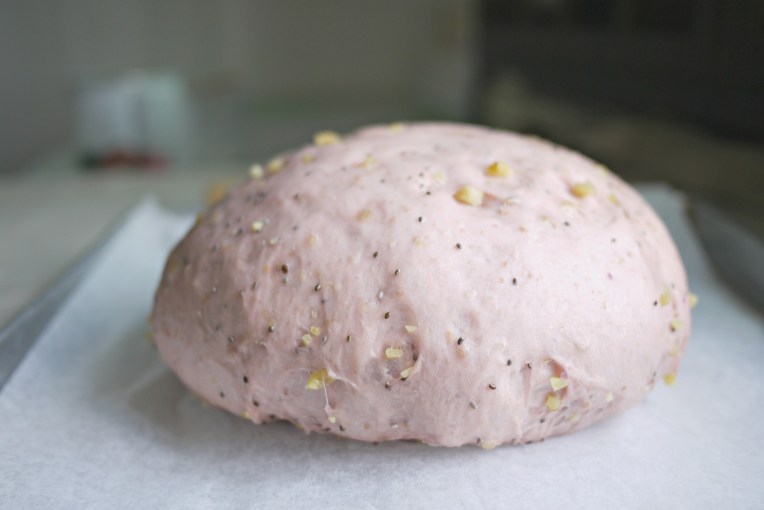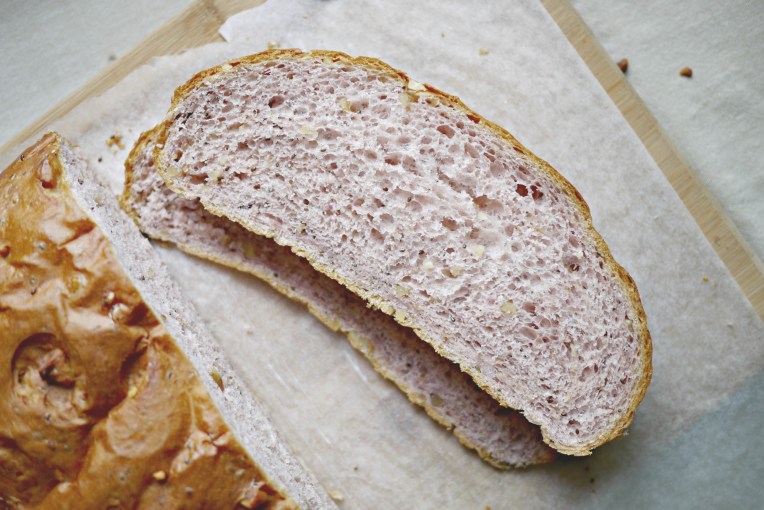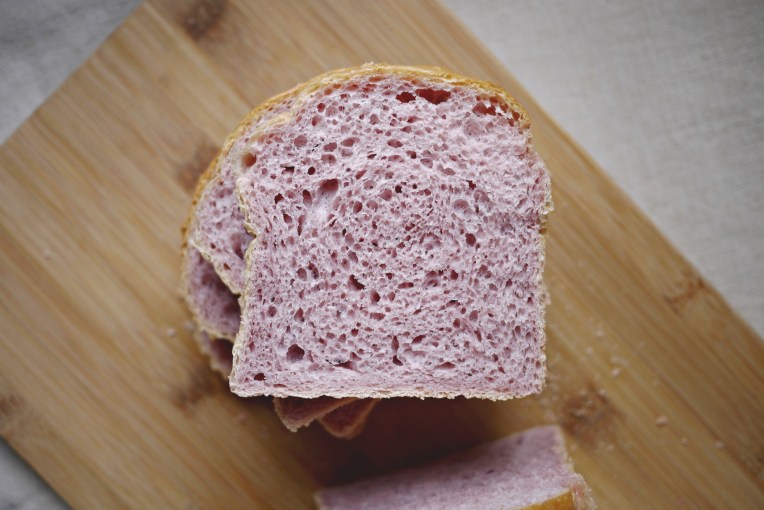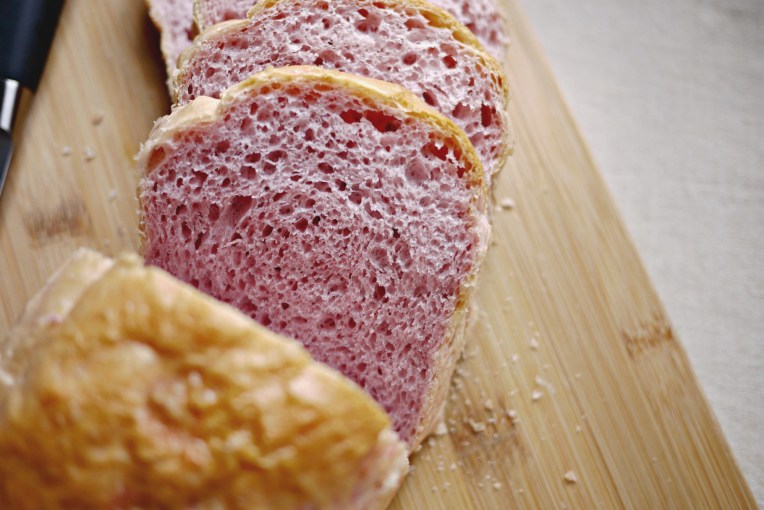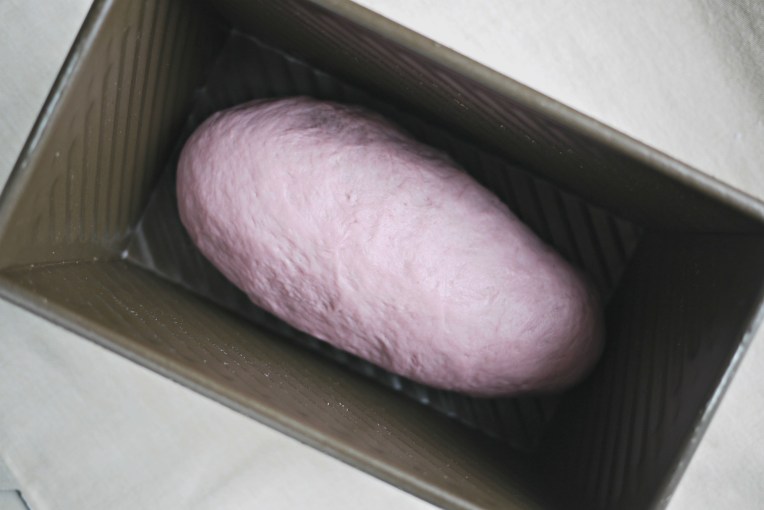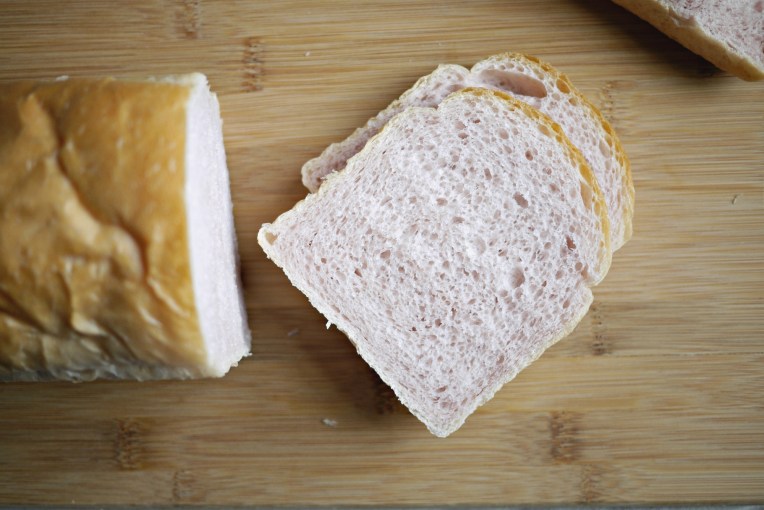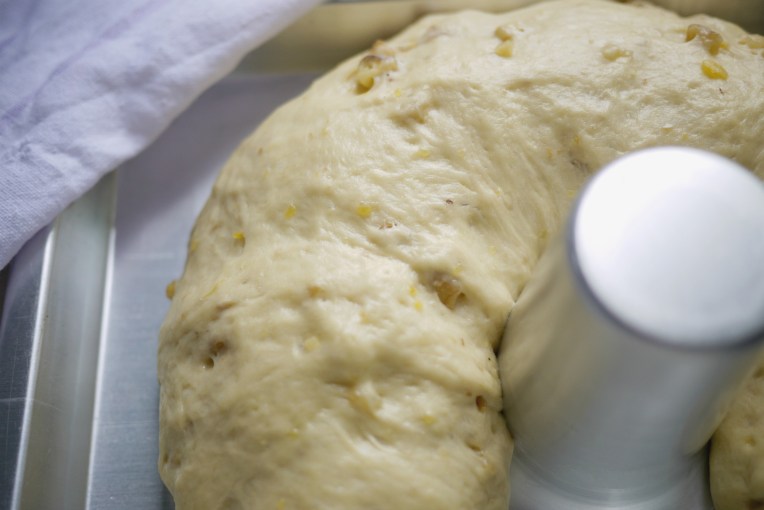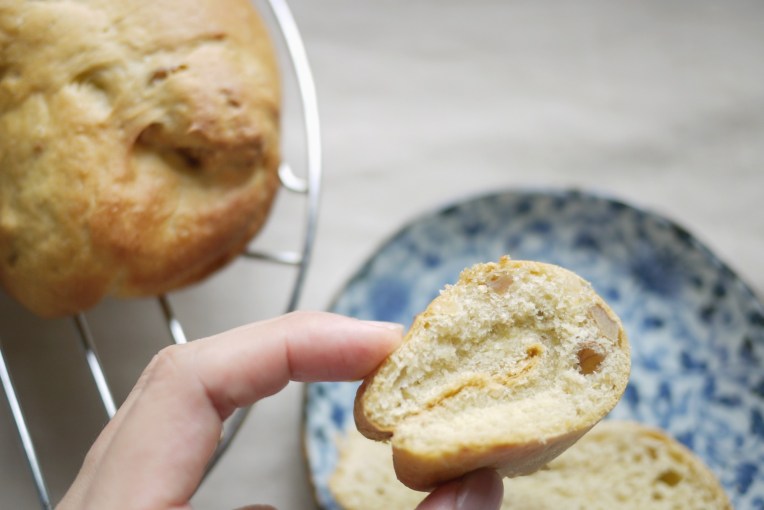

To answer my own question from here, yes, sugar made a different in height. I also added one egg instead of half to save the trouble of finding another recipe to use the remaining egg. So maybe it helped too?
Nothing else is new here, so I simply copy and paste the recipe from loaf #2 post, and added a series of photos to demonstrate how I shape the loaf. Hope this helps.
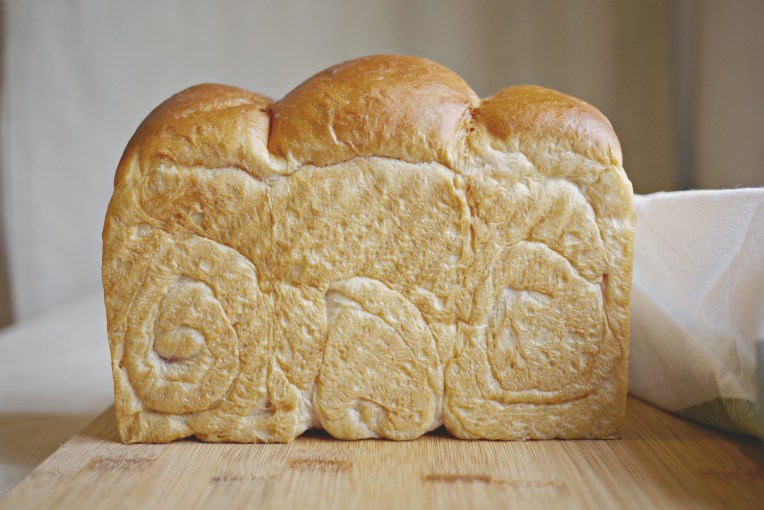

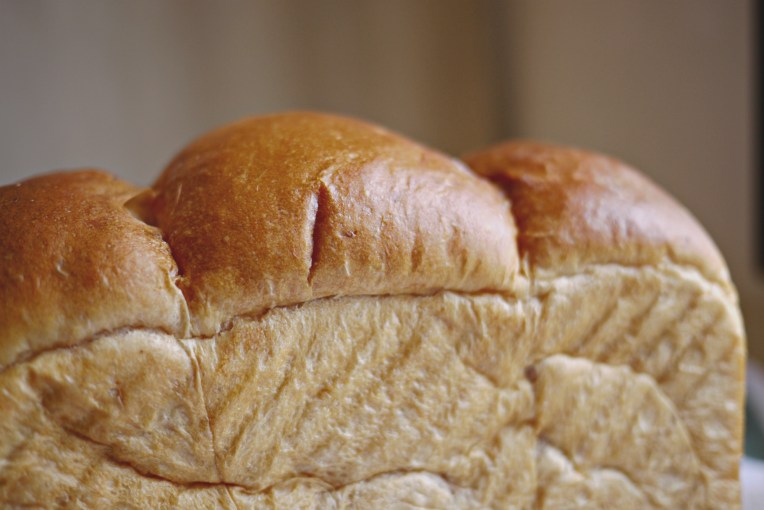


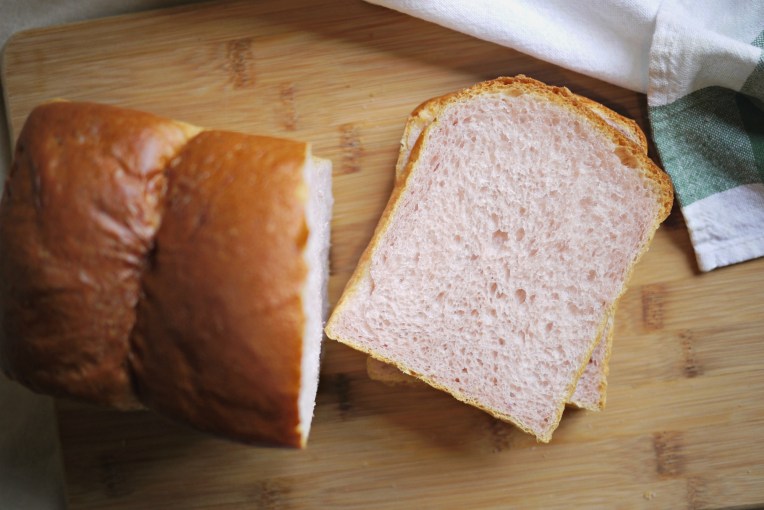
Purple Sweet Potato Bread Loaf
220g bread flour 1/2 tablespoon instant dry yeast 1/4 sea salt 2 tablespoon raw sugar 100g purple sweet potato, steamed + mashed 1 large egg ** 40g water 40g cold unsalted butter, cubed
** refers to large egg that weighs at least 70g including the shell.
Combine flour, yeast, sugar and salt in a mixer bowl and stir with a hand whisk to mix these dry ingredients well. Add sweet potatoes, beaten egg and water, turn the mixer on lowest speed (KA1) with a dough hook, and knead until the ingredients come into a ball. Stop the mixer and let this dough stand for 15 minutes to allow liquid to be absorbed better by the flour, I find that kneading to reach window pane stage later will be easier with this additional dough resting step.
After 15 minutes, turn the mixer on again to knead the dough for 1 minute, then slowly add cubed butter one by one, and knead till dough reaches window pane stage. Remove bowl from mixer, and let it proof for 60 minutes, covered and placed in a draft free place.
The dough would have expanded to twice its size. To test if it is ready to be shaped, poke a hole in the center with a floured finger, the dent should not bounce back if the bulk rise is completed. Once the dough is ready, punch down the dough to deflate it, and transfer it to a clean work top.
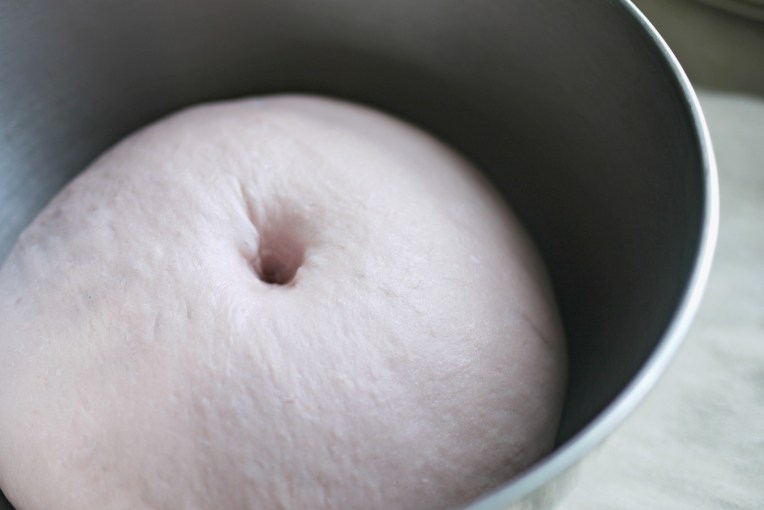
With a rolling pin, flatten the dough to push out gas trapped inside the dough. Divide the dough into 3 equal portions. Shape each ball as follow and place them in a bread tin, seam side downwards, and proof for another 60 minutes.






Bake in a preheated oven at 170C for 30 minutes. When done, remove bread from tin immediately and let it cool completely on a rack before slicing.
If you like your bread loaf soft at the top, brush over the top crust with butter when the bread is freshly hot out of the oven. The soft dome top also makes slicing easier after the bread has cooled down.
